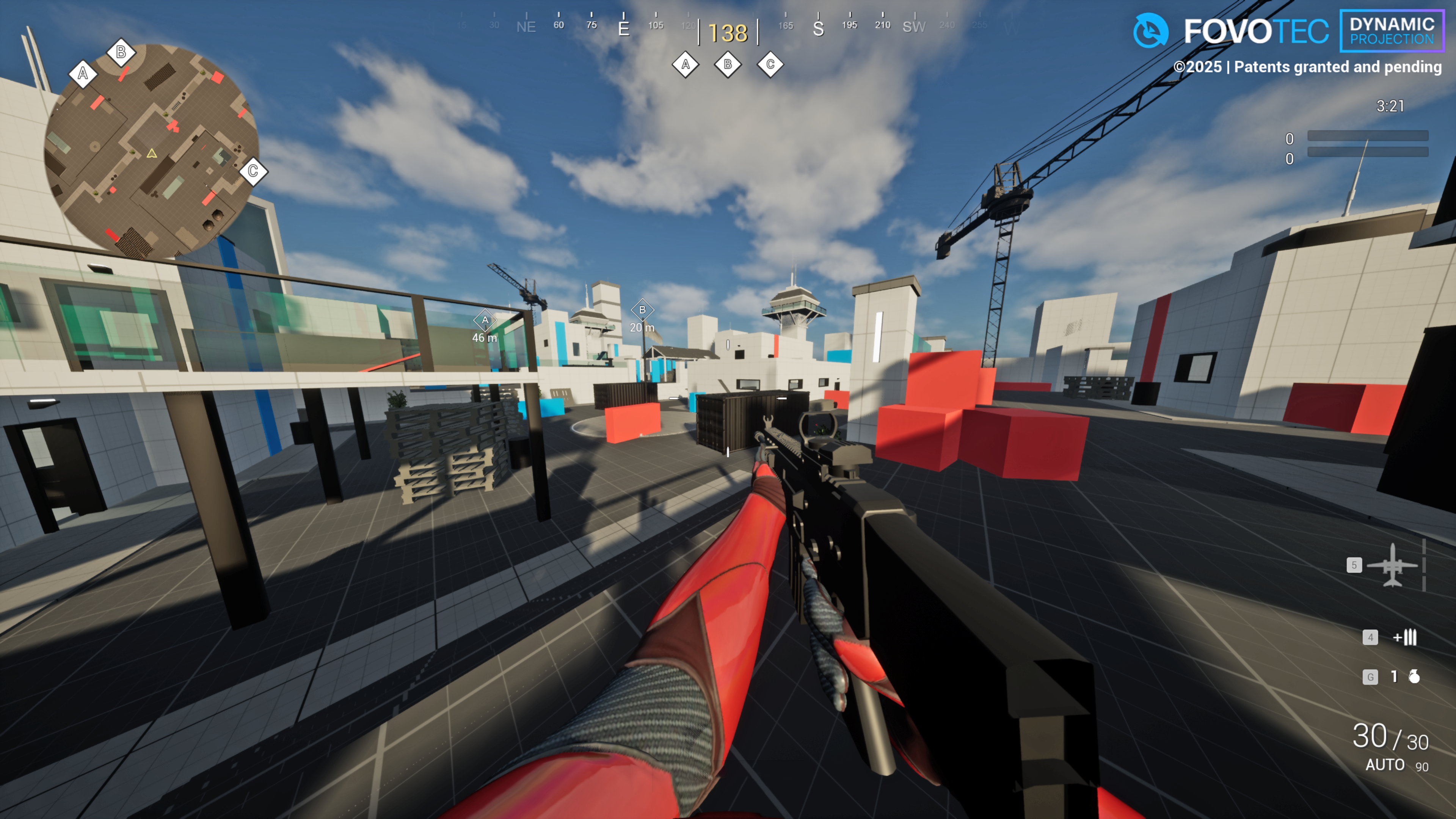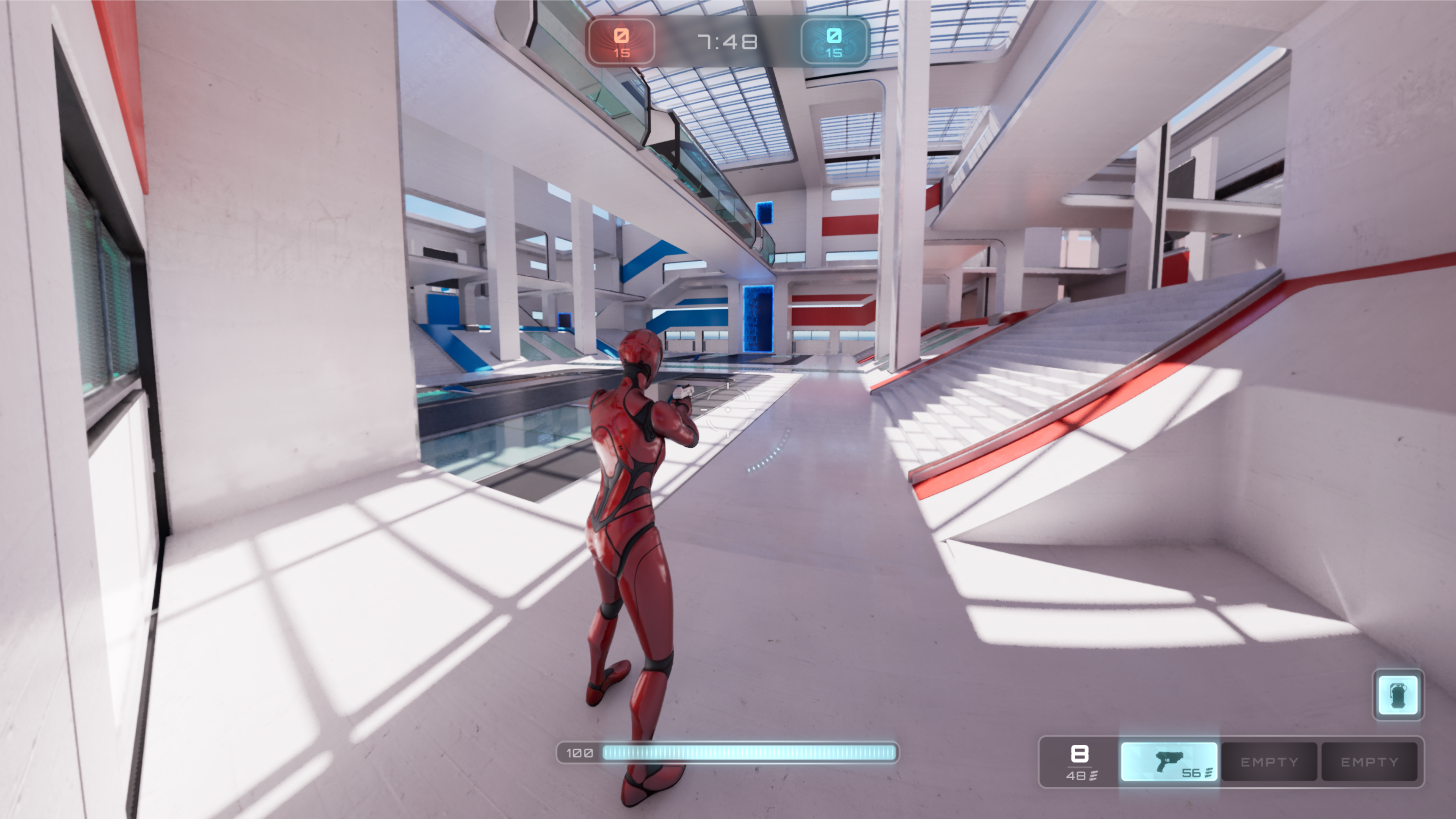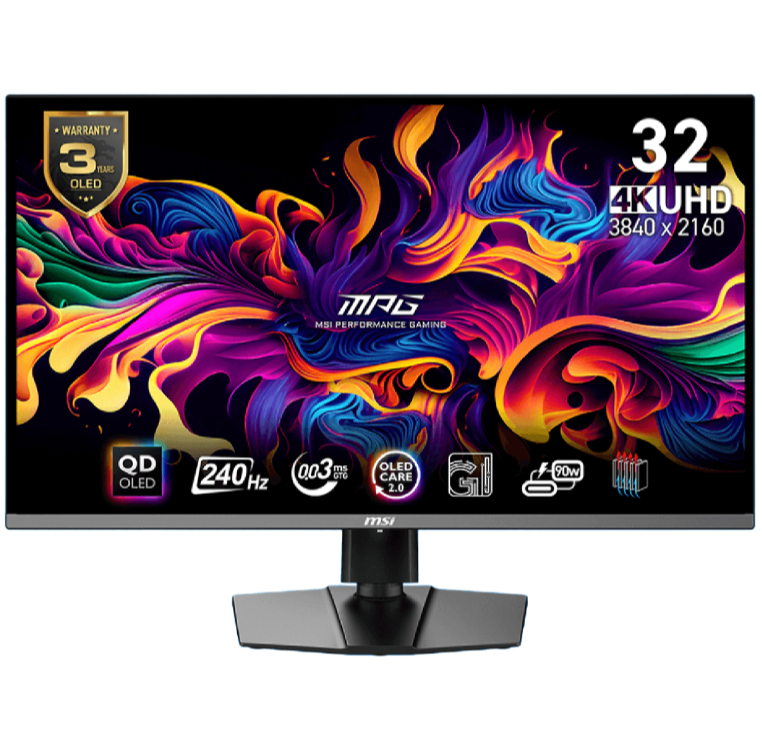'Once gamers try it, they won’t want to go back': The curse of wonky high-FOV graphics may be a thing of the past with this single plugin
Ultrawide monitor owners, rejoice!
If you've just bought a new ultrawide monitor or invested in a top-end headset for some serious VR action, one of the graphics settings you've probably tried changing in games is the field of view. What you've also probably noticed is that opening up the view to make things more immersive just ruins the visual experience. The good news is that one UK team reckons it's cracked the problem, and it's already made the tools for game devs.
Human vision has a horizontal field of view of around 200 degrees or so, but the vast majority of 3D games stick with 75 to 90 degrees. Many will let you play around with an FOV (field of view) setting, but once you go over 100, the edges go all kinds of wonky.
It is possible, of course, to code a game so that it doesn't do this, but it's easier said than done. That's because while it's a piece of cake to increase the horizontal size of the frustrum created by the camera in a 3D world, objects at the edge of the FOV will look distorted and stretched unless this is all accounted for and corrected.
And what might work fine at 110 degrees, for a game that's normally 90 degrees, might not work very well at higher FOV values.
Enter stage left, Fovo Technology Ltd, or Fovotec for short. This UK-based company has developed a software package that handles it all for you, and has created plugins for Unity and Unreal Engine that allow game developers to implement a FOV system that can go all the way up to 180 degrees with only a small amount of distortion at those extreme levels.




Fovotec's co-founder and CEO, Robert Pepperell, says: "The way we see the world around us is very different to how screens display it, but until now we've had no way to replicate this in a way designers and developers can access.
"With wider fields of view, games can now deliver greater visual realism, improved situational awareness, and a more natural sense of speed and motion, which ultimately elevates the overall gaming experience. Once gamers try it, they won’t want to go back."
Keep up to date with the most important stories and the best deals, as picked by the PC Gamer team.
You can see demonstrations of it in action in Fovotec's video, and it really does look very impressive. However, the company also claims that it has solved another issue with using a high field of view: the performance impact. Put simply, the greater the camera's view of the world is, the more objects need to be rendered, and so the GPU has more work to do.
Fovotec says that its system can improve the performance of a game from anywhere between 33 and 100%, depending on the hardware and settings used. Even at 4K on a mid-tier GPU, it claims.

Even if the performance boost is nowhere near as big as that, just having a very wide FOV without any edge or motion distortion, objects correctly positioned and distanced within the world, and no nausea-inducing effects caused by a fisheye-like effect has got to be good news for developers and gamers alike.
At the moment, the software isn't commercially available to anyone yet, but the company is working on inviting select developers to a closed beta. If that all goes well, then we might just see the likes of Witcher 4 launching with a fantastic way to view its glorious landscapes in an ultra-wide field of view, all without headaches and weird graphics.

1. Best overall:
MSI MPG 321URX
2. Best 4K:
LG Ultragear 27GR93U
3. Best budget 4K:
Gigabyte M28U
4. Best 1440p:
Xiaomi G Pro 27i
5. Best budget 1440p:
KTC H27T22C-3
6. Best budget 1080p:
AOC Gaming C27G4ZXE
7. Best Ultrawide:
Asus ROG Swift OLED PG34WCDM
8. Best OLED ultrawide:
Gigabyte MO34WQC2
9. Best budget ultrawide:
ASRock Phantom PG34WQ15R2B
10. Best WOLED:
LG Ultragear 32GS95UE
11. Best 1440p OLED:
MSI MPG 271QRX
12. Best budget OLED ultrawide:
Alienware 34 QD-OLED
13. Best dual-mode:
Alienware AW2725QF

Nick, gaming, and computers all first met in the early 1980s. After leaving university, he became a physics and IT teacher and started writing about tech in the late 1990s. That resulted in him working with MadOnion to write the help files for 3DMark and PCMark. After a short stint working at Beyond3D.com, Nick joined Futuremark (MadOnion rebranded) full-time, as editor-in-chief for its PC gaming section, YouGamers. After the site shutdown, he became an engineering and computing lecturer for many years, but missed the writing bug. Cue four years at TechSpot.com covering everything and anything to do with tech and PCs. He freely admits to being far too obsessed with GPUs and open-world grindy RPGs, but who isn't these days?
You must confirm your public display name before commenting
Please logout and then login again, you will then be prompted to enter your display name.


